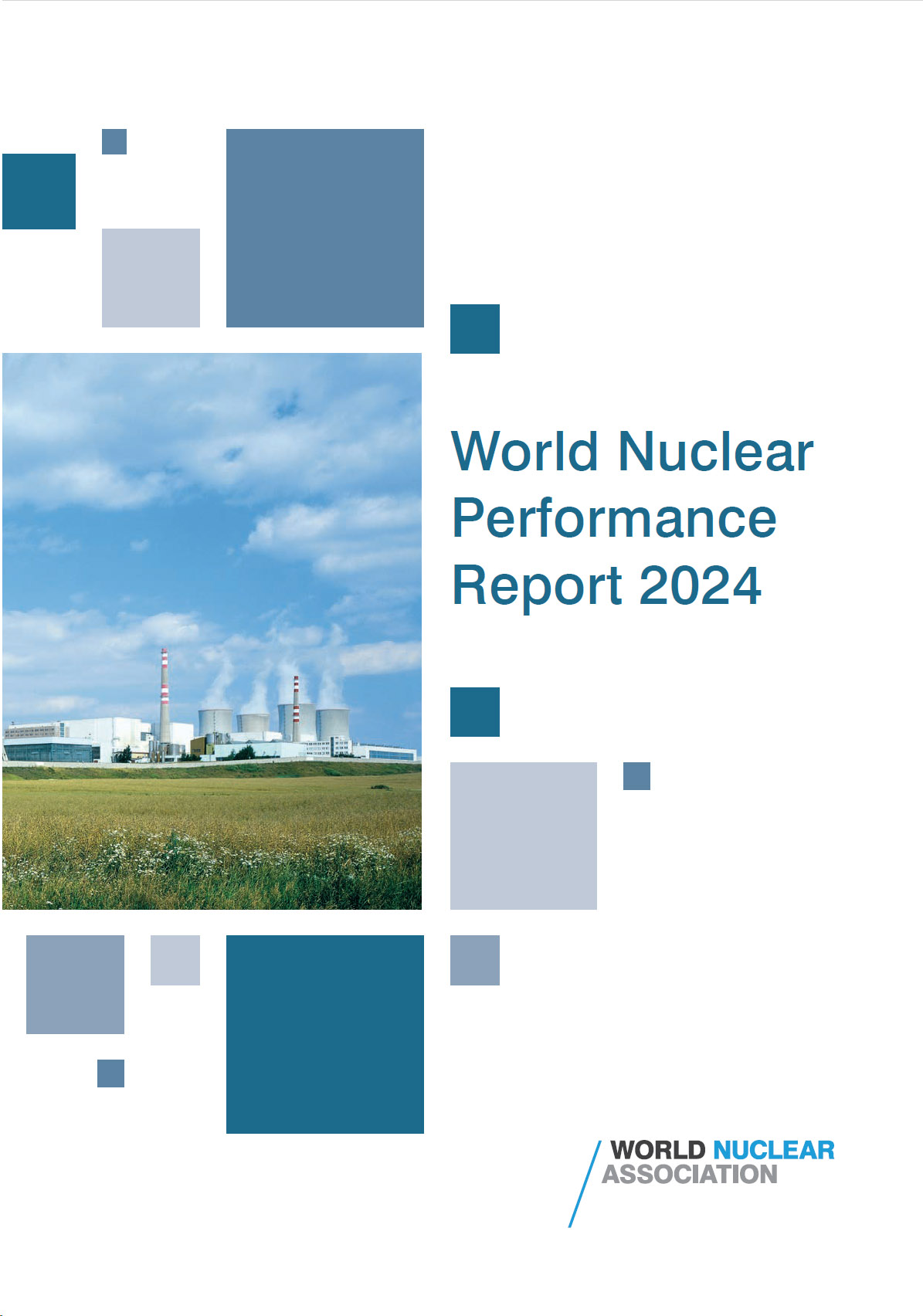NEW REPORT HIGHLIGHTS INCREASE IN GLOBAL NUCLEAR REACTOR GENERATION & PERFORMANCE
The annual World Nuclear Performance Report shows an increase in global nuclear electricity generation and average capacity factors for 2023, highlighting the continuation of excellent performance of the global nuclear reactor fleet.
A variety of lifetime operation extensions, uprates and restarts are included within the case studies of the report. Key highlights include:
- Global nuclear electricity generation rose to 2602 TWh in 2023, up from 2544 TWh in 2022, providing 9% of the world’s electricity—second only to hydropower among clean energy sources.
- France, this summer’s Olympics host, was powered by over 60% nuclear electricity, on average, thanks to the return to service of French reactors, contributing an additional 42 TWh.
- The global capacity factor reached 81.5% in 2023, up 1% from 2022, reflecting the consistent strong performance over the past 20 years. Reactor performance remains high regardless of age.
- In 2023, nuclear reactors helped avoid 2.1 billion tonnes of carbon dioxide emissions from equivalent coal generation— that’s more than the annual emissions of almost every individual country, with only China, the US and India having higher national CO2 emissions.
- 64 reactors in 15 countries are currently under construction, while over 20 new entrant countries, such as Ghana, Poland and the Philippines, are at various stages of developing policies to enable construction of their first nuclear plants.
Commenting on the Report, Dr Sama Bilbao y Leon, the Director General of World Nuclear Association said: “Our report shows that nuclear energy remains one of the most reliable means of supplying clean energy to the grid. The continued excellent performance of the global reactor fleet, the rapid roll out of new nuclear in UAE, and continued growth of generation in China are all clear evidence of a high performing industry.”
Looking ahead she said: “The global nuclear industry is set for a period of major expansion. At COP 28, 25 countries signed the declaration to triple global nuclear capacity by 2050. Excitingly, there are new reactors coming online and plans for new construction in a diverse range of countries. Collaboration and competition in the industry will deliver many new projects over the coming years. Our Performance Report indicates that reactors built now will produce dependable, carbon-free energy for decades and decades.”
With five reactors starting up and five closing, global nuclear capacity was down by one gigawatt compared to the previous year, reflecting minimal change in global capacity over the last five years. The increase in generation, despite a drop in capacity, highlights the excellent performance and value delivered by nuclear energy to the grid.
The report also includes data about new grid connections and construction starts:
- In 2023, five reactors were connected to the grid for the first time across a diverse set of countries: one each in China, Slovakia, the USA, Belarus, and South Korea. Comparatively, construction starts were mostly confined to China, with five out of six new construction starts in 2023 being in China, and the other in Egypt.
- In Asia, there has been a sustained and significant increase in nuclear generation over the last decade. Of the total 64 reactors under construction today, more than two-thirds are in Asia, with 30 reactors under construction in China alone.
- Meanwhile, Africa is ahead of North and South America, as well as Western and Central Europe, in terms of the share of reactors under construction, due to the El Dabaa project in Egypt. Eastern Europe and Russia are second to Asia in terms of the number of units under construction.
H.E. Mohamed Al Hammadi, Managing Director of Emirates Nuclear Energy Corporation (ENEC) and Chair of the World Nuclear Association said: “The Performance Report is the authoritative stock take for the performance of over 439 reactors that form the global fleet. With both nuclear energy generation and capacity factor rising in 2023, it is clear that nuclear energy is a proven, reliable and substantial generator of clean electricity for 36 countries today. With many more reactors under development and a further 64 under construction, we look forward to this growth to continue as part of the momentum to triple global nuclear energy capacity by 2050 to not only meet Net Zero targets and boost national energy security, but to satisfy the huge wave of demand coming from energy intensive industries such as AI, data centers and Electric Vehicles. The UAE is proud to be part of this global fleet, as we draw close to the commercial operations of Unit 4 of the Barakah Nuclear Energy Plant, and the full-fleet operations that will enable the generation of up to 25% of the UAE’s electricity demand. Now, further optimizing the performance of reactors, extending the safe, reliable, and long-term operation of all units, as well as deploying new units are crucial steps in the reemergence of civil nuclear energy in the race to Net Zero power.”

Background
World Nuclear Association’s Performance Report tracks nuclear construction and energy output across the globe. The Association collates publicly available information from the IAEA and other sources to produce its analysis of the global status of the nuclear industry. The report is produced on an annual basis and was first published in 2016. The report is available for free on the World Nuclear Association website here or via download here.